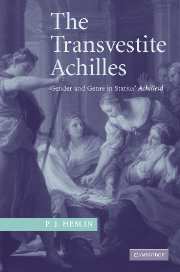Book contents
1 - Opening Nights at the Opera 1641–1744
Published online by Cambridge University Press: 29 October 2009
Summary
Eccoti ò Lettore in questi giorni di Carnevale un'Achille in maschera.
Preface to L'Achille in Sciro, Ferrara 1663Over the course of the late seventeenth and early eighteenth centuries, the story of Achilles in Scyros was represented many times on operatic stages across Europe. Given the nature of the young genre, it is not hard to see why this motif was popular. To illustrate the principle, contrast the Elizabethan theater, where the custom of boy actors playing the parts of women lent a certain piquancy to plots in which a female character dressed as a man: thus a boy played a woman playing a man. In Baroque opera, the situation was reversed. The primary roles were almost invariably scored for high voices, which could only be sung by a woman or a man whose secondary sexual characteristics had not developed. In most cases the choice between a female singer and a castrato seems to have been determined by the local availability of singers rather than the pursuit of naturalism. It was not impossible to see the role of Mark Antony interpreted by a woman while opposite her Cleopatra was played by a male castrato. Except in the public theaters of the Papal States, where women were often prohibited from appearing on stage and thus castrati were the rule, heroic male roles were commonly interpreted by female singers. Thus in the Naples production of Achille in Sciro discussed below (p 38), the two leading ladies, Vittoria Tesi and Anna Peruzzi, are reported to have quarreled over who should play Achilles and who Deidamia.
- Type
- Chapter
- Information
- The Transvestite AchillesGender and Genre in Statius' Achilleid, pp. 1 - 56Publisher: Cambridge University PressPrint publication year: 2005



